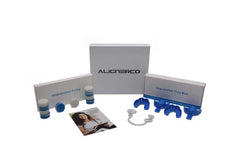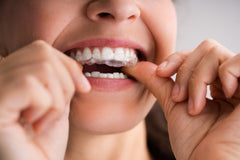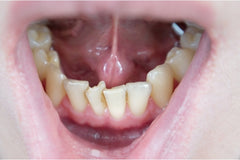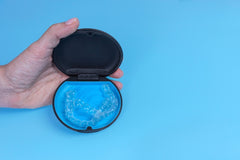A toothbrush is a vital tool that everyone needs to maintain good oral health and hygiene. However, if you pick the wrong one, it can sometimes actually do more harm than good. There are a number of factors to consider, from bristle softness to the head size of the toothbrush. At the end of the day, you want to equip yourself with the right kind of toothbrush so that it can help to fight cavities and tooth decay and is suited to your teeth and gums.
There are so many toothbrushes out there to buy at the moment, but as a result, so much choice can be confusing for many. So here is a guide to help you to choose the right kind of toothbrush to best help your teeth and gums and ensure stellar dental care.
How to choose the right toothbrush
Bristles
Toothbrushes, no matter if you choose one that is electric or manual, will come with some nylon bristles. There are a number of different kinds of bristles to choose from, with soft, medium, or hard. It can be quite normal to think that if you choose hard bristles, then they will do the best job of getting your teeth clean in the best way. However, in many instances, it can be a good idea to consider medium or soft bristles on a toothbrush, as choosing hard bristles can impact your gums if there is a lot of pressure applied. On a similar note, if you are quite hard with your brushing and have hard bristles, then it can impact the enamel on your teeth and cause them damage. Soft bristles on an electric toothbrush can be a good option, but they don’t always deal with plaque all that effectively. Unless you have any problems or issues with your gums, then it is recommended to choose medium bristles.
There are a number of natural options that you can get, such as toothbrushes being made from bamboo and having bamboo bristles. For good oral hygiene, these aren’t recommended as the bristles are very soft.
Manual toothbrush or electric toothbrush
There are pros and cons to both kinds of toothbrush, so you need to arm yourself with the facts and then choose what is going to be best for you. For example, for children, electric can be a good option as it will help their teeth to get much cleaner than they would if children are brushing manually. Very little effort is required with an electric toothbrush in order to get teeth clean, but more manual effort is required with a manual toothbrush. So children and even elderly people could benefit from an electric toothbrush if they are unable to put in the effort that is needed with a manual brush.
There are some personal preferences that come with toothbrushes. Some people find the vibration of an electric toothbrush uncomfortable in their mouth, for example. There has been research into what makes your teeth the cleanest, and there is very little evidence to suggest a difference in effectiveness from manual and electric, as long as the right amount of time and effort is being taken. However, there is some research that does suggest that when the bristles on a toothbrush go round, as well as back and forth, as they would with an electric toothbrush, they can be better at helping to eliminate plaque than a manual toothbrush. Electric toothbrushes often come with a timer too, which can be helpful to make sure that you are brushing your teeth for the right amount of time (at least two minutes).
The decision does come down to personal choice and preference, as long as you are thorough and particular about your dental care. You should remember to replace whatever toothbrush you choose (manual or electric toothbrush heads) as soon as the bristles are showing signs of damage or wear (around the three month mark). Replacing is important so that your toothbrush can remain effective at keeping your teeth clean as well as eliminating the risk of germs which can be harboured over time on bristles.
Design
It is generally recommended that using a smaller toothbrush head is best, as it will help you to use it in all areas of your mouth; even in some of the harder to reach areas. This will depend on the size of your mouth, though, so toothbrush head size is definitely something to consider. The handle of the toothbrush doesn’t play a huge part in keeping your teeth clean. However, if you find holding it uncomfortable or it is heavy to hold for two minutes, then you’ll find it hard to brush your teeth effectively. Look for one with a non-slip handle and if you are choosing an electric toothbrush, choose one that isn’t too heavy for you.
Other elements of the toothbrush design don’t impact the effectiveness of the toothbrush, so choose one as bright and bold as you’d like! If your toothbrush comes with a cap for the toothbrush head, then make sure that the cap gets cleaned pretty regularly, so that you can reduce the spread of germs and bacteria.
It is also important to note that as well as brushing your teeth regularly with the right kind of toothbrush, it is a good idea to floss too. Flossing helps to reach those parts of your mouth and teeth that the brush can’t quite get too, helping to keep your teeth extra clean and bacteria-free; a must for a healthy oral hygiene routine.
Get in touch with us today
If you are interested in learning more about getting straighter teeth, and you want to find out more about our clear braces, then get in touch with one of our team of experts today! Feel free to call us on (647) 360 0096 or email us on team@alignerco.ca. We can help to answer any of your questions or get an impression kit sent out to you. We look forward to hearing from you.



















